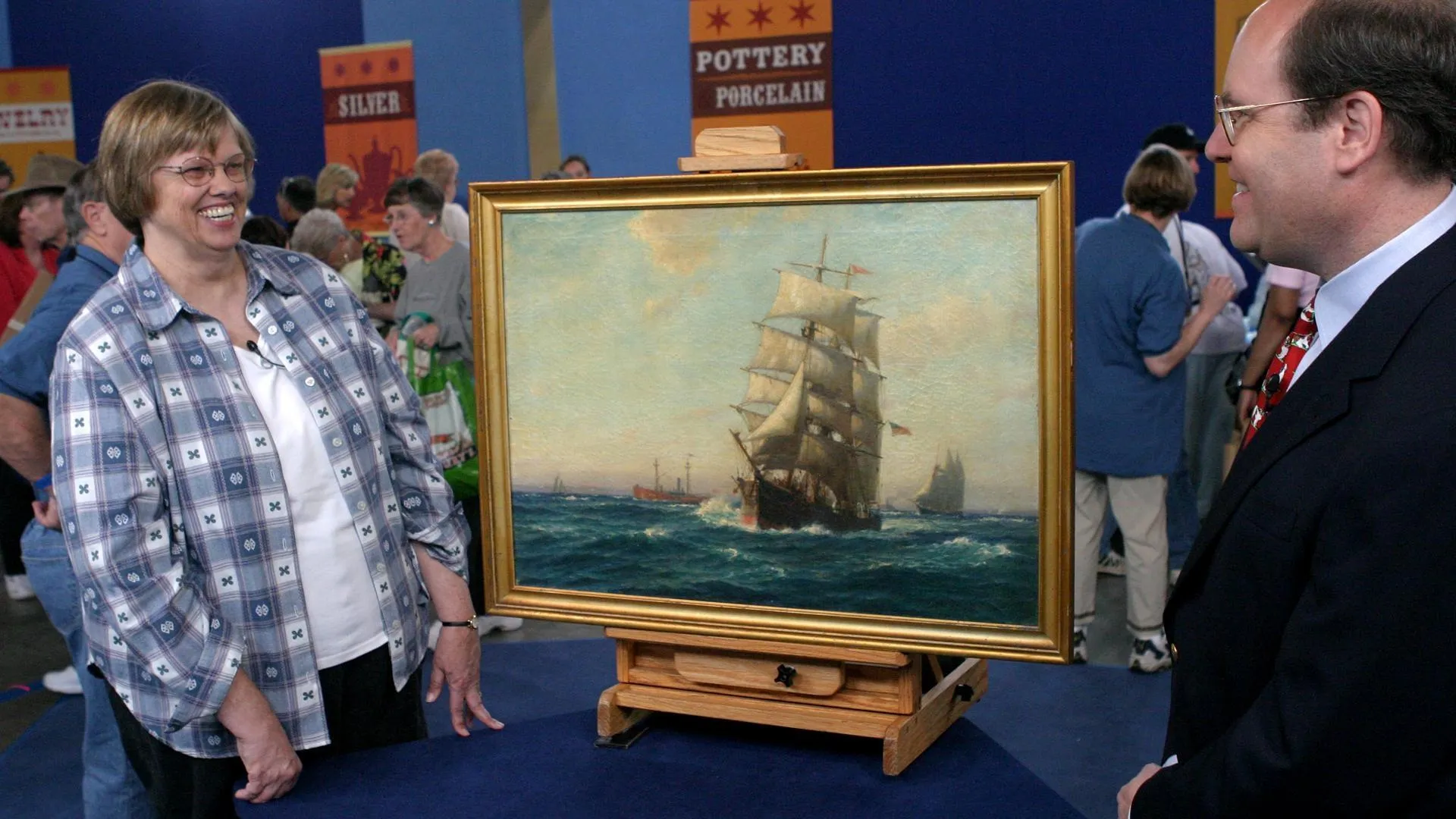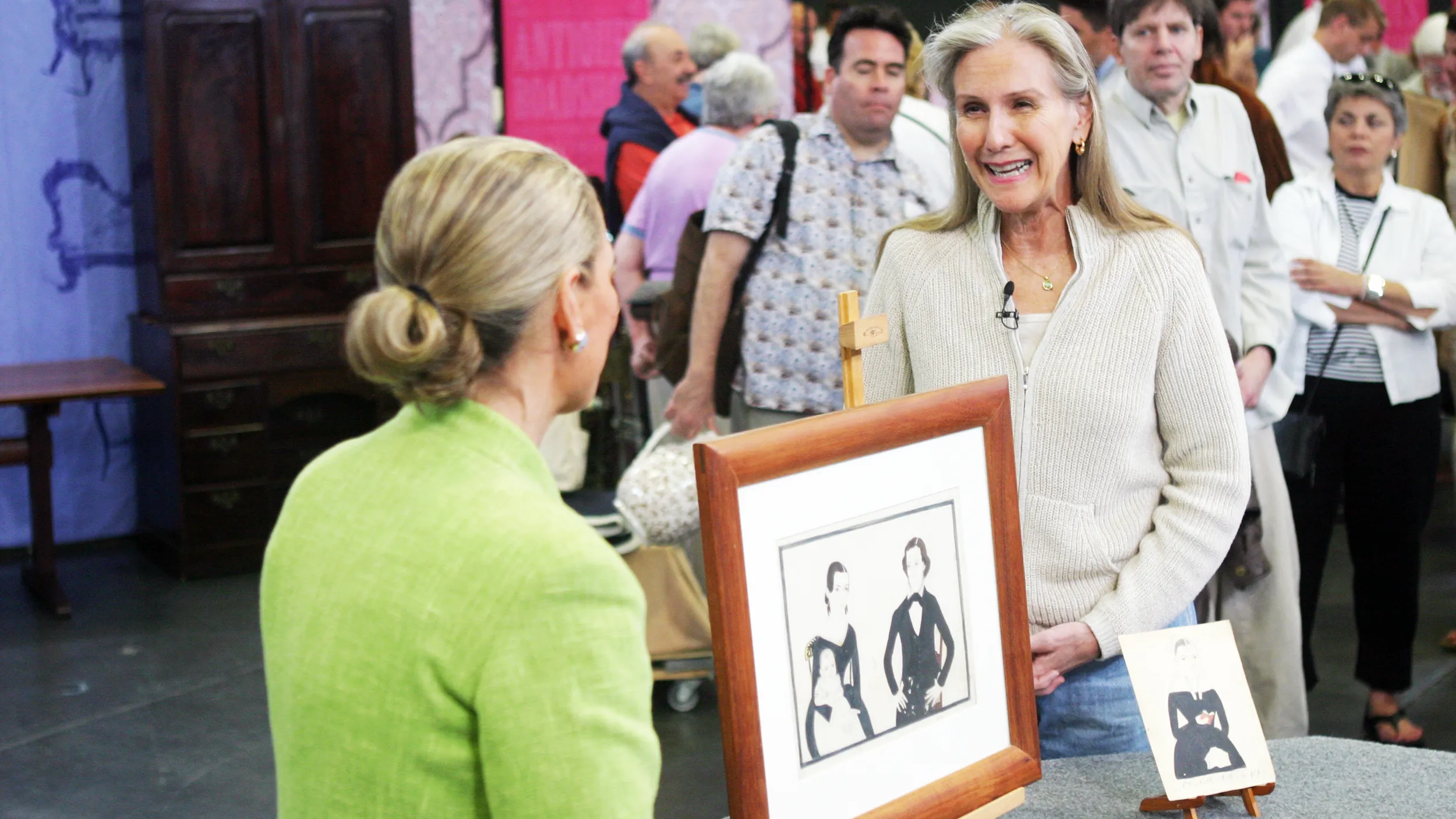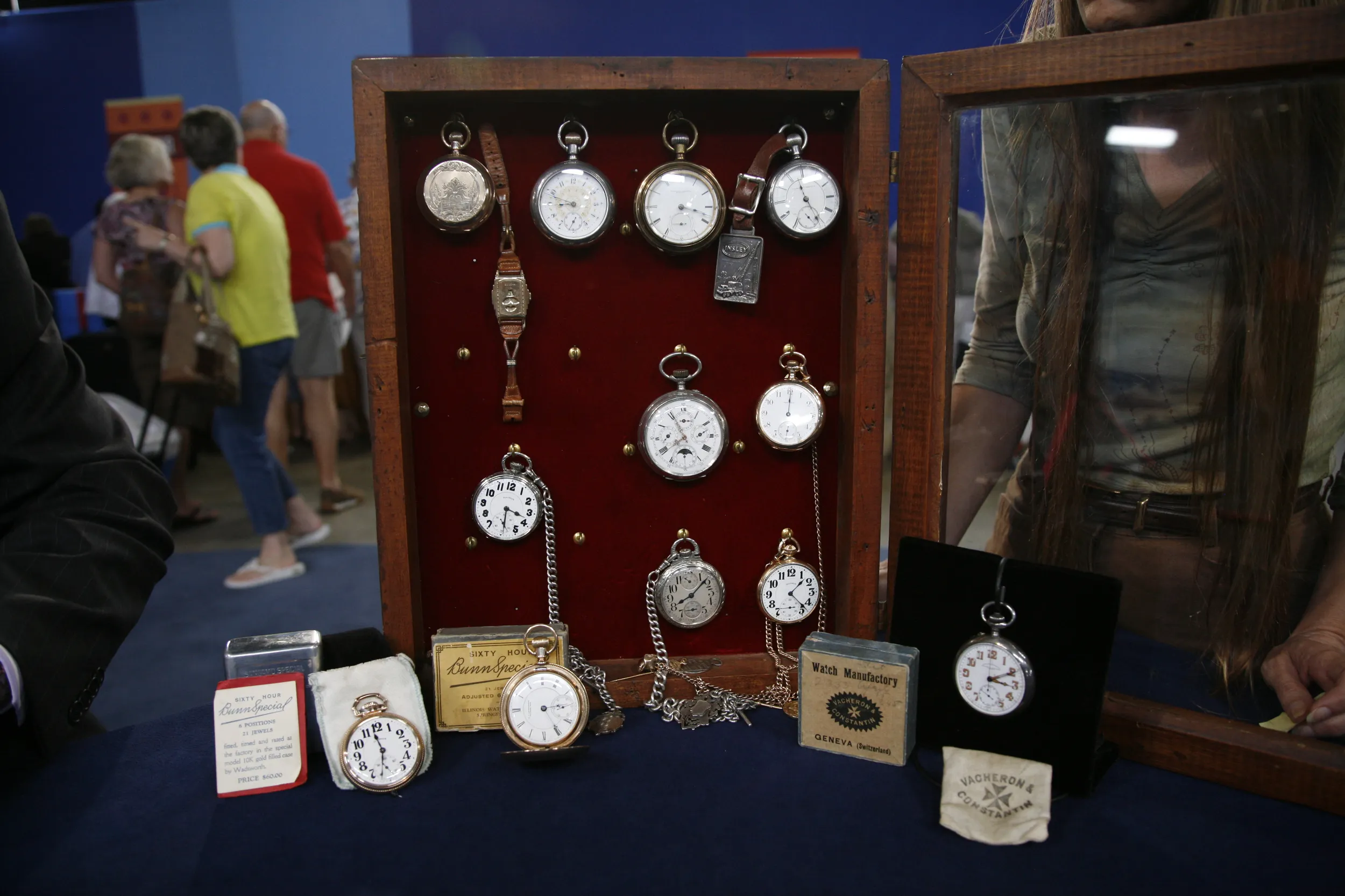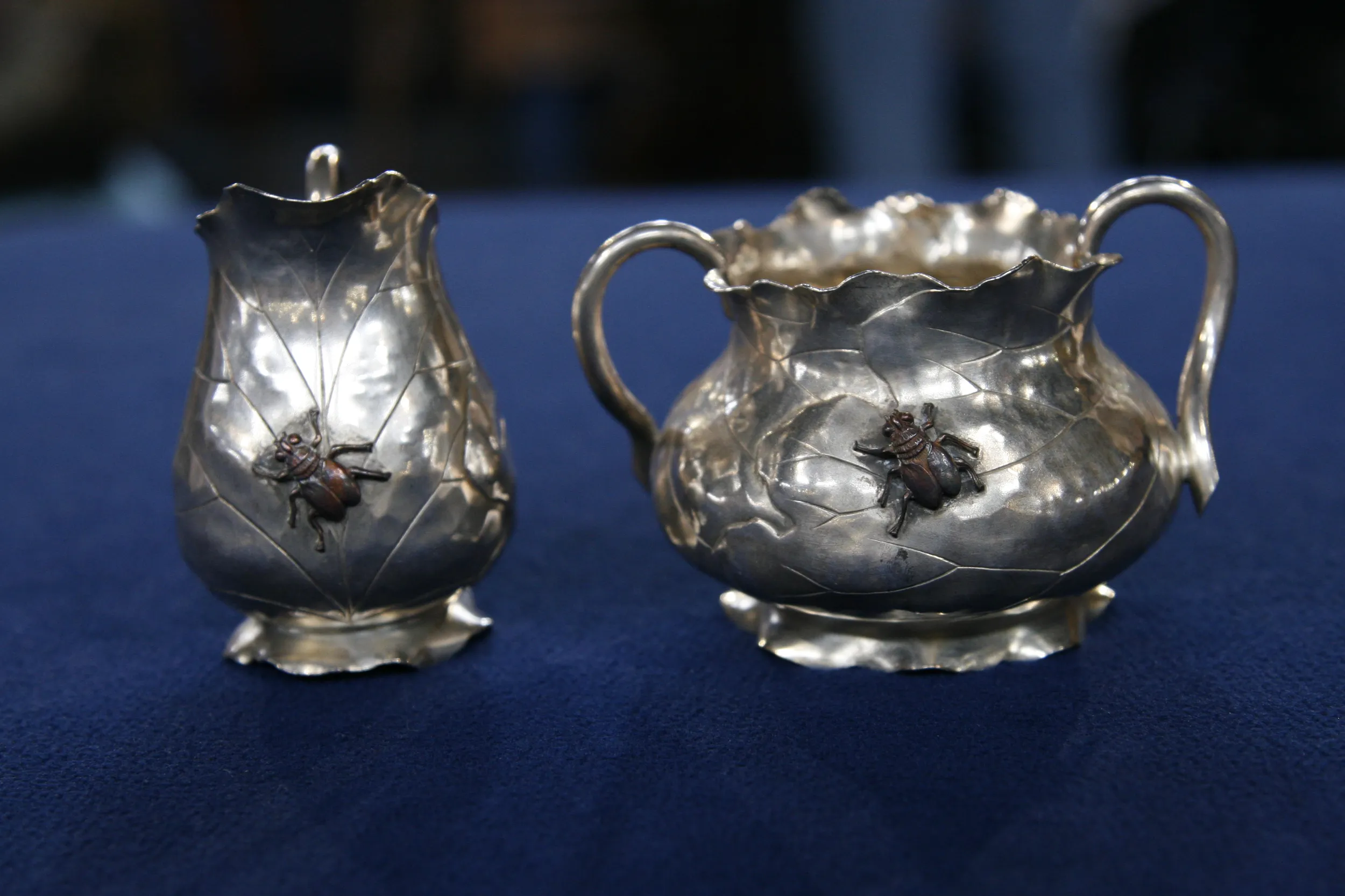GUEST: They were given to my mother when she launched a ship in Scotland at the Clydebank. And apparently, it was customary to give any lady who did this a gift, and they said, "You're from the United States, and you'd have to pay duty, so we're going to give you an antique."
APPRAISER: What year was this?
GUEST: I think '49. She was told that these were antique perfume bottles that had presumably belonged to Nell Gwyn, who was a mistress of Charles II, and I've always wondered if any of that could be true.
APPRAISER: They are definitely of the period of Charles II, who reigned from 1660 to 1685. And they are pieces of silver in the chinoiserie style. In the 1680’s, for a very brief period, about five years, there was a workshop in London that was producing decoration in the Chinese style like this. So it's an Englishman of the 1680's idea of what the Orient was like. They are scent bottles, part of a toilet service, probably.
GUEST: I see.
APPRAISER: It would be a big dressing table set...
GUEST: Yes.
APPRAISER: ...Of mirror, glove trays, various boxes for unguents and cosmetics. And two perfume bottles like these. If we take the top off, you'll see they have little pierced insets inside.
GUEST: Yes.
APPRAISER: And if we look underneath, they have the original owner's coat of arms, which I'm afraid is not Nell Gwyn's...
GUEST: That's too bad.
APPRAISER: And here we have the maker's mark. Now, this is an interesting Charles II-period silversmith whose initials were T.J. Now, most of the London silversmiths from before 1697, we don't know what their marks were. Because in that year, the records of the Goldsmiths' Company were all destroyed in a fire.
GUEST: Oh, really?
APPRAISER: So we have to do a bit of detective work. And there is one man who was working in London at this period. His name was Thomas Jenkins. And from archives, we know that Thomas Jenkins used this mark-- T.J. with two shells either side of it. In terms of quality, they are superb. And in terms of condition, they are really exceptional. They are sterling silver, they don't have a full set of hallmarks, but that's often the case in the 1680s. I think probably the pair would sell for about $30,000 to $50,000.
GUEST: (laughing) My heavens.
APPRAISER: Are you surprised?
GUEST: Yes, I... (gasps) I can't believe it.












